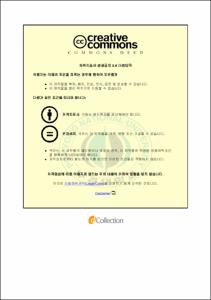전해-자기 복합가공을 이용한 연료전지 분리판의 마이크로 채널 디버링
- Alternative Title
- The Deburring Process of Micro Channel for Fuel Cell Bipolar Plates using EP-MAP Hybrid Process
- Abstract
- A fuel cell is a device that converts the chemical energy from a fuel into electricity through a chemical reaction with oxygen or another oxidizing agent. Proton exchange membrane fuel cell(PEMFC) has many advantages which are environment-friendly energy source, high efficiency of generation, non-noise and mobility.
Stainless steel bipolar plates for PEMFC offer many advantages over conventional graphitic materials. These include relative low cost, high strength, easy of manufacture and as they can be shaped into thin sheets, significant improvement in the power/volume ratio. However, the manufacturing of metal bipolar plate using micro-end mill occur the burr from workpiece. By a fuel gas leak and the disturbance of flow of hydrogen and oxygen, occurred burr degrades efficiency and performance and thus the manufacture of metal bipolar plate is demanded deburring process as a finishing process.
In this study, deburring process using EP-MAP hybrid process was proposed. The EP-MAP hybrid process is expected to machine complex and hardened materials. For this reason, The EP-MAP deburring process was applied to micro channel in bipolar plate, thereby it can obtain both deburring process and polishing process.
The EP-MAP deburring process on the micro channel for bipolar plate was performed. Through design of experiment method and RSM method, the tendency toward the surface roughness of channel and error of height according to process parameter after EP-MAP deburring process was analyzed. Surface roughness and error of height of micro channel after the EP-MAP hybrid deburring process showed a tendency to be improved with the increasing of feed rate, increasing of working gap and deceasing of magnetic flux density. And, when a electric potential was 10V, both the superior surface roughness and lower error of height was acquired. Therefore, it seems that the level 1 parameter A(magnetic flux density) and level 2 parameter B(electric potential) and level 3 parameter C(working gap), D(feed rate) may provide optimum result of EP-MAP hybrid deburring process.
- Issued Date
- 2013
- Awarded Date
- 2013. 2
- Type
- Dissertation
- Publisher
- 부경대학교
- Alternative Author(s)
- Park, Chang Geun
- Affiliation
- 부경대학교 대학원
- Department
- 대학원 생산자동화공학과
- Advisor
- 곽재섭
- Table Of Contents
- 목 차
Nomenclature ⅲ
List of tables ⅳ
List of figures ⅴ
List of photographs ⅶ
1. 서 론
1.1 연구배경 및 필요성
1.2 국내외 연구동향
1.3 연구 내용 및 구성
2. 이론적 배경
2.1 자기연마의 원리
2.2 전해연마의 원리
2.3 탄소나노튜브-금속결합체
2.4 전해-자기 복합가공
2.4.1 전해-자기 복합가공의 개념
2.4.2 전해-자기 복합가공 메커니즘
2.4.3 전해-자기 복합 디버링 공정의 적용
2.5 연료전지의 개요 및 금속분리판
2.6 반응표면법
3. 전해-자기 복합 디버링 공정의 인자특성평가
3.1 실험장치
3.2 실험계획 및 구성
3.2.1 실험 시편의 제작
3.2.2 실험의 구성
3.3 실험 결과 및 평가
3.3.1 마이크로 채널의 형상오차에 따른 특성평가
3.3.2 마이크로 채널의 표면거칠기에 따른 특성평가
4. 반응표면법을 통한 전해-자기 복합 디버링 공정의 분석
4.1 실험인자의 표준화
4.2 반응표면법을 이용한 공정변수의 분석
4.3 검증실험 및 고찰
5. 결 론
REFERENCES
ABSTRACT
- Degree
- Master
- Files in This Item:
-
-
Download
 전해-자기 복합가공을 이용한 연료전지 분리판의 마이크로 채널 디버링.pdf
기타 데이터 / 9.22 MB / Adobe PDF
전해-자기 복합가공을 이용한 연료전지 분리판의 마이크로 채널 디버링.pdf
기타 데이터 / 9.22 MB / Adobe PDF
-
Items in Repository are protected by copyright, with all rights reserved, unless otherwise indicated.